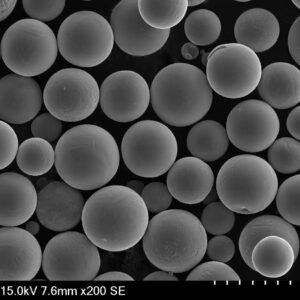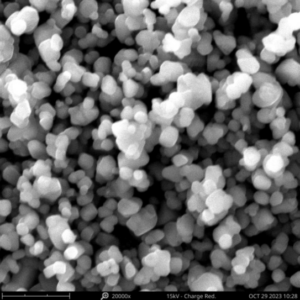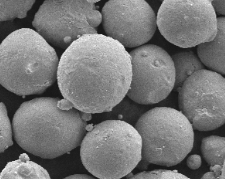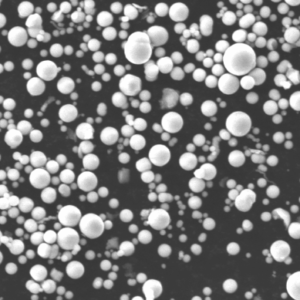When you’re diving into the world of metal powders, especially Pure Cr Powder (pure chromium powder), the options and information can get overwhelming. Whether you’re in manufacturing, aerospace, or even academia, understanding Pure Cr Powder and its diverse applications can elevate your projects and results. But what exactly is this powder? How does it compare to other metal powders? What specific types are out there, and why does it matter to know them?
Overview of Pure Cr Powder
Pure Cr Powder, or pure chromium powder, is a metal powder used in various industries such as aerospace, metallurgy, and automotive due to its exceptional properties like high corrosion resistance, durability, and strength. Chromium is one of the most commonly used metals for creating alloys, and its powdered form provides versatility for different manufacturing processes like additive manufacturing (3D printing), powder metallurgy, and thermal spraying.
The increasing demand for chromium powder has led to the availability of different models and grades, each suited for specific applications. But before we dive into these models, let’s first break down what makes chromium powder special.
Composition of Pure Cr Powder
Chromium powder typically consists of finely ground chromium particles, with purity levels often exceeding 99%. The composition can vary slightly based on the intended application. For example, impurities like oxygen, nitrogen, or sulfur are often present in trace amounts, but highly pure forms are available for high-precision uses.
| Composition Element | Percentage in Pure Cr Powder |
|---|---|
| Chromium (Cr) | 99.0% – 99.9% |
| Oxygen (O) | ≤ 0.1% |
| Nitrogen (N) | ≤ 0.05% |
| Sulfur (S) | ≤ 0.01% |
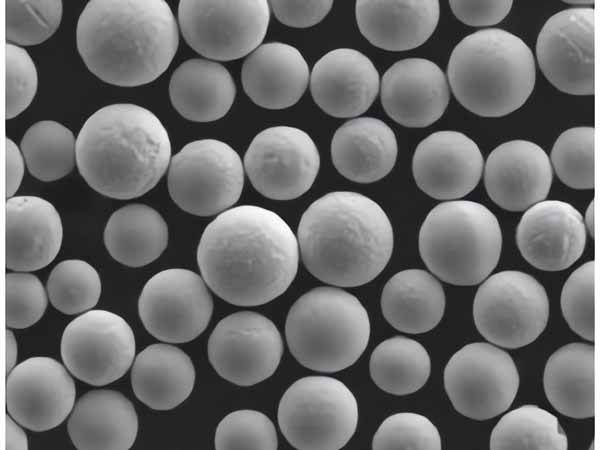
Characteristics of Pure Cr Powder
The characteristics of Pure Cr Powder make it valuable in many high-performance applications. Let’s dive into its core properties.
| Property | Description |
|---|---|
| Corrosion Resistance | Chromium is famous for its resistance to oxidation and tarnishing. |
| High Melting Point | Melting at around 1907°C, making it excellent for high-temperature applications. |
| Hardness | Chromium is exceptionally hard (Mohs hardness: 8.5), ensuring strength and wear resistance. |
| Density | Its density is approximately 7.19 g/cm³, which influences its suitability for specific applications. |
| Electrical Conductivity | Chromium’s conductivity is relatively low compared to metals like copper, but sufficient for certain industrial uses. |
| Magnetic Properties | Chromium has weak magnetic properties, adding value in applications where minimal magnetism is desired. |
| Reflectivity | Pure chromium has a shiny, reflective surface, making it aesthetically appealing for coating applications. |
Types and Models of Pure Cr Powder
To meet specific industrial requirements, manufacturers offer Pure Cr Powder in various models and grades. Below is a list of some of the most common models and their key features:
| Model | Description | Purity | Particle Size |
|---|---|---|---|
| Cr-1000 | General-purpose chromium powder used for coating and thermal spraying. | 99.5% | 45 µm – 150 µm |
| Cr-2500 | High-purity powder used in 3D printing applications, offering excellent flow properties. | 99.9% | 15 µm – 53 µm |
| Cr-4000 | Premium-grade powder with ultra-fine particle size, ideal for laser cladding and aerospace manufacturing. | 99.8% | 10 µm – 45 µm |
| Cr-PX300 | Powder specifically engineered for hot isostatic pressing (HIP) applications. | 99.7% | 20 µm – 100 µm |
| Cr-SP500 | Suitable for superalloys and specialized metallurgical applications due to its superior strength. | 99.6% | 10 µm – 60 µm |
| Cr-100A | Known for excellent corrosion resistance, commonly used in the chemical industry. | 99.5% | 45 µm – 125 µm |
| Cr-5N | Ultra-high purity powder used for research purposes in electronics and advanced ceramics. | 99.999% | 1 µm – 10 µm |
| Cr-Nano50 | Nanopowder version for cutting-edge applications in nanotechnology and high-strength materials. | 99.95% | < 50 nm |
| Cr-HG800 | High-grade powder tailored for use in fuel cells and hydrogen storage applications. | 99.7% | 5 µm – 50 µm |
| Cr-AMX1 | Additive manufacturing specific powder, optimized for sintering processes in metal 3D printing. | 99.9% | 15 µm – 63 µm |
Each model is optimized for particular processes and offers unique advantages. Whether you’re in aerospace, automotive, or even high-tech research, there’s a specific type of Pure Cr Powder designed to fit your needs.
Applications of Pure Cr Powder
Chromium powder has a broad range of applications, thanks to its unique properties such as corrosion resistance and high melting point. Let’s break down some of the most common uses of Pure Cr Powder across industries.
| Industry | Application | Why Chromium Powder? |
|---|---|---|
| Aerospace | Used in jet engines and gas turbines for high-temperature resistance. | High melting point and corrosion resistance ensure durability in extreme environments. |
| Automotive | Employed in thermal spraying to coat parts like pistons and exhaust systems. | Chromium coating enhances wear resistance and prevents rust. |
| Additive Manufacturing | Chromium powder is used for 3D printing metal parts in industries ranging from aerospace to medical. | The powder’s flowability and consistency make it ideal for precise, layer-by-layer builds. |
| Metallurgy | Used in alloy production to improve hardness, strength, and corrosion resistance. | Adding chromium improves the overall properties of steel and other metals. |
| Chemical Industry | Utilized as a catalyst in various chemical reactions, including the production of synthetic rubber and plastics. | Chromium’s reactivity makes it a valuable catalyst in chemical processes. |
| Electronics | Chromium powder is used in the manufacturing of components like resistors and capacitors. | Its conductivity, though lower than some metals, is still effective in specialized components. |
| Ceramics | Added to advanced ceramic materials for enhanced performance in high-temperature applications. | Chromium’s stability at high temperatures improves the ceramic’s functionality. |
Specifications and Grades of Pure Cr Powder
When choosing the right Pure Cr Powder, several specifications must be considered, including purity levels, particle size, and standards for quality.
| Specification | Detail |
|---|---|
| Purity Levels | Ranges from 99.0% to 99.999%, depending on the application. |
| Particle Size | From nanometer-sized particles (<50 nm) to larger particles (150 µm). |
| Density | Typically 7.19 g/cm³. |
| Melting Point | 1907°C. |
| ASTM Standards | Chromium powder often conforms to ASTM standards such as ASTM B822 for powder particle size distribution. |
| ISO Standards | ISO 4499 is commonly referenced for measuring the physical properties of metal powders. |
Comparing Pure Cr Powder to Other Metal Powders
How does Pure Cr Powder stack up against other metal powders in terms of performance, cost, and specific applications? Let’s compare.
| Metal Powder | Advantages | Disadvantages |
|---|---|---|
| Chromium (Cr) | Excellent corrosion resistance, high hardness. | Expensive and more difficult to process than iron powders. |
| Nickel (Ni) | Superior corrosion and oxidation resistance. | Heavier and more expensive than chromium. |
| Aluminum (Al) | Lightweight and corrosion-resistant. | Lower melting point and less wear-resistant than chromium. |
| Copper (Cu) | High conductivity, easily malleable. | Poor wear resistance compared to chromium. |
| Titanium (Ti) | Strong, lightweight, corrosion-resistant. | Expensive and challenging to machine. |
Chromium is better suited for high-stress environments compared to metals like aluminum and copper but can be pricier. When corrosion resistance and hardness are critical, Pure Cr
Powder tends to outperform its competitors.
Suppliers and Pricing of Pure Cr Powder
If you’re looking to purchase Pure Cr Powder, here’s a look at some top suppliers and the typical price range based on purity and quantity.
| Supplier | Product Offered | Price Range (Per kg) |
|---|---|---|
| American Elements | Pure Cr Powder (99.9% purity, 1-10 kg) | $250 – $500 |
| Makin Metal Powders | Chromium powder for powder metallurgy applications | $300 – $600 |
| Stanford Advanced Materials | High-purity chromium powder for advanced research applications | $350 – $700 |
| Globe Metal | Chromium powder for thermal spraying and coating | $400 – $800 |
The price depends significantly on the purity level, particle size, and the supplier’s reputation. Specialized grades like nano-sized powders or ultra-high purity powders tend to command a premium.
Advantages and Limitations of Pure Cr Powder
Now, let’s take a closer look at the pros and cons of using Pure Cr Powder in various applications.
| Advantages | Limitations |
|---|---|
| High corrosion resistance makes it suitable for harsh environments. | Expensive compared to other metal powders like iron or copper. |
| Exceptional hardness ensures long-lasting wear resistance. | Can be challenging to work with in manufacturing due to its hardness. |
| High melting point makes it perfect for high-temperature applications. | Not as conductive as copper, limiting its use in electrical applications. |
| Versatile, can be used in additive manufacturing, metallurgy, and coatings. | Availability of high-purity grades can sometimes be limited, depending on the region. |
| Chromium’s reflective surface makes it aesthetically appealing for coating applications. | Limited magnetic properties make it unsuitable for certain electromagnetic applications. |

FAQ
| Question | Answer |
|---|---|
| What is the main use of Pure Cr Powder? | It’s used in industries like aerospace, automotive, and metallurgy for its corrosion resistance and high-temperature durability. |
| Is Pure Cr Powder expensive? | Yes, compared to other metal powders like iron or aluminum, chromium powder is more expensive due to its properties and applications. |
| Can chromium powder be used in 3D printing? | Absolutely, many models of chromium powder, like Cr-2500 and Cr-AMX1, are specifically designed for additive manufacturing. |
| What are the purity levels available? | Chromium powder is available in a wide range of purities, from 99% to 99.999%, depending on the application. |
| Where can I buy Pure Cr Powder? | Suppliers like American Elements, Stanford Advanced Materials, and Makin Metal Powders offer various grades of chromium powder. |
In summary, Pure Cr Powder is a versatile and powerful material for industries that demand high performance in extreme conditions. Whether you need it for coatings, additive manufacturing, or alloy production, understanding its properties and choosing the right model is crucial.


